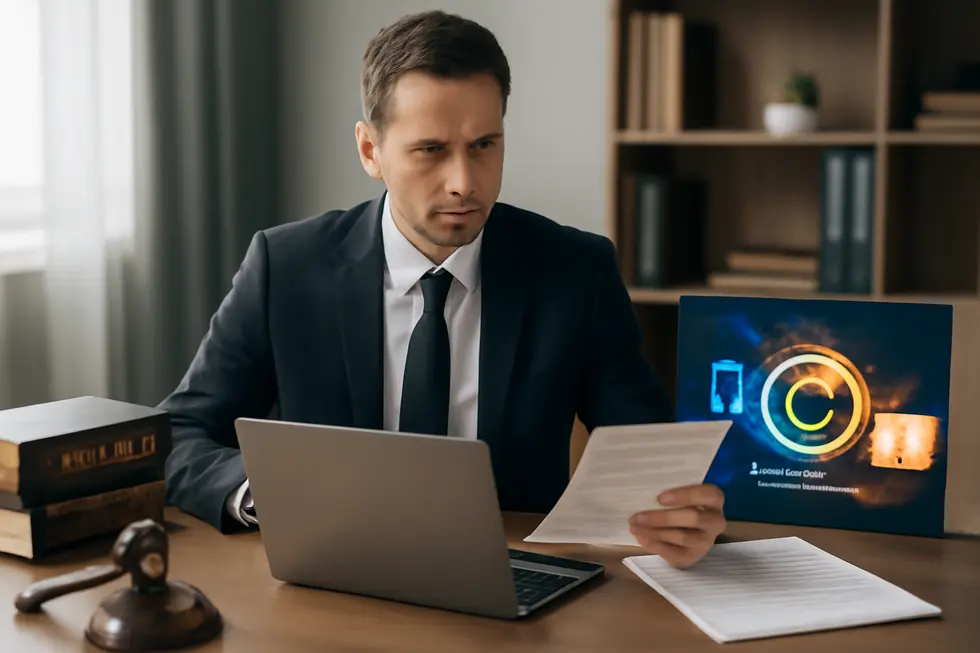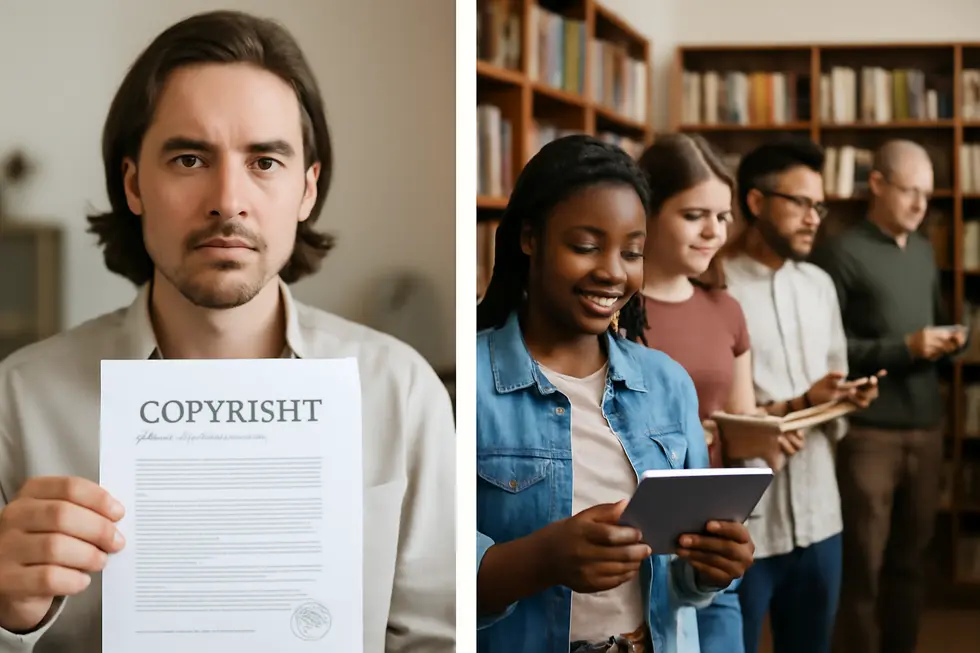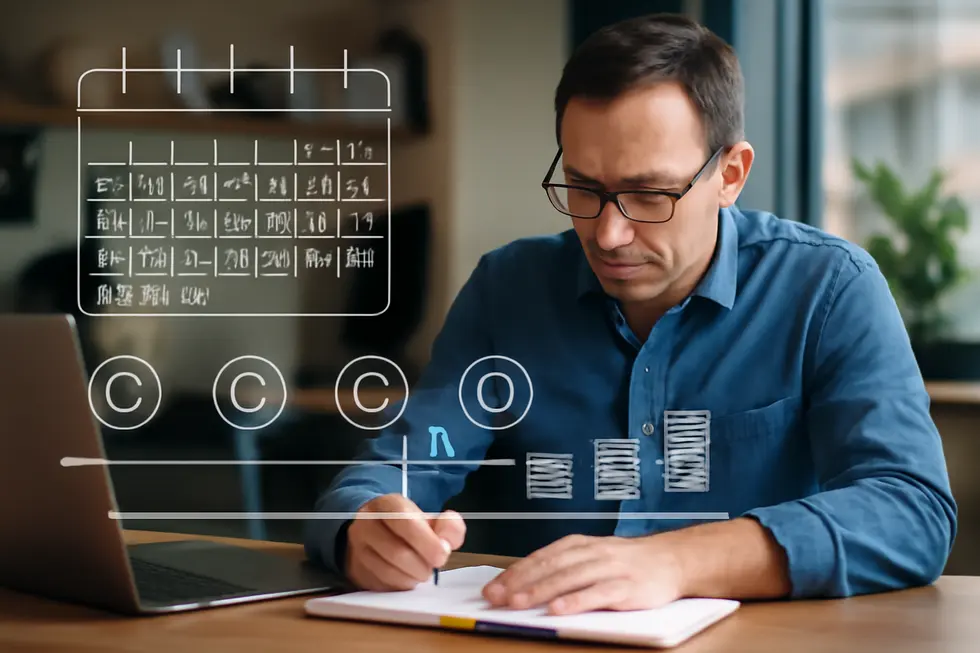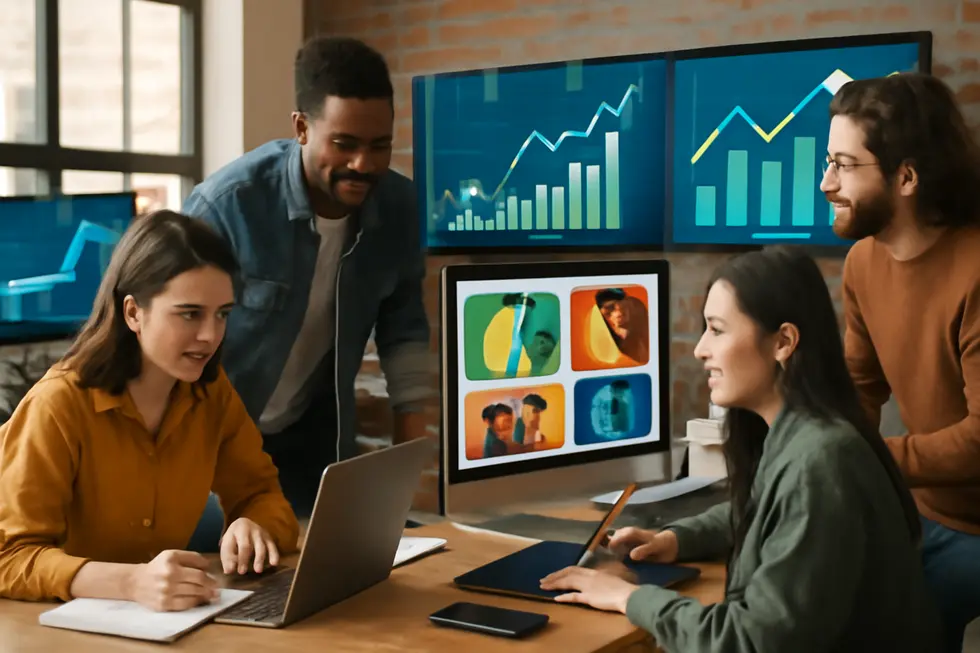Introduction
Copyright is more than just legal jargon; it is a vital economic instrument that empowers business owners to protect their creative assets and generate value. Understanding copyright definition economics helps business owners grasp how exclusive rights enable control over original works, encouraging innovation and fostering sustainable growth. This article explores the legal foundations behind copyright, the economic incentives it creates, the delicate balance between public access and creator rights, and the significant impact of copyright duration—all culminating in how copyright fuels innovation and cultural expansion. Each chapter offers practical insights that clarify why solid copyright strategies are essential for any forward-thinking business owner.
Tables of Contents
Chapter 1: Legal Foundations of Copyright Definition Economics
- Navigating Technological Shifts: AI and Digital Disruption in Copyright Economics
- Balancing Exclusive Rights and Market Forces: Economic Incentives in Copyright Law
- Geopolitical Complexities Shaping the Legal and Economic Landscape of Copyright
- Balancing Creator Rights and Cultural Growth: Societal Dimensions in Copyright Economics
Chapter 2: Economic Incentives Embedded in Copyright Definition Economics
- Harnessing Technological Innovation: Economic Incentives within Copyright Frameworks
- How Economic Incentives Drive Creativity Through Copyright Controls
- Global Geopolitics and Innovation: The Far-Reaching Economic Effects of Copyright Incentives
- Cultural Evolution and Societal Balance Through Copyright’s Economic Incentives
Chapter 3: Balancing Public Access and Creator Rights in Copyright Definition Economics
- Navigating Digital Technologies: Protecting Creators and Expanding Public Access in Copyright Economics
- Economic Incentives and Market Mechanisms Shaping Creator Rights and Public Access
- Navigating Geopolitical Dynamics in the Balance of Creator Rights and Public Access
- Navigating Legal Protections and Public Interests for a Thriving Creative Economy
Chapter 4: Economic Impact of Copyright Duration in Copyright Definition Economics
- Balancing Innovation and Access: How Copyright Duration Shapes Economic and Technological Progress
- Balancing Creative Incentives and Market Forces: How Copyright Duration Shapes Economic Outcomes
- Global Geoeconomics and Copyright Duration: Navigating Innovation and Trade Dynamics
- Balancing Incentives and Access: Societal and Economic Dynamics of Copyright Duration
Chapter 5: Economic Dimensions of Copyright in Driving Innovation and Cultural Expansion
- How Copyright’s Economic Incentives Propel Innovation and Cultural Flourishing
- How Legal Copyright Protections Fuel Innovation and Enrich Cultural Landscapes
- Navigating the Trade-Off Between Creator Exclusivity and Public Access for Sustainable Innovation
- Overcoming the Economic and Legal Barriers of Copyright to Foster Innovation
Chapter 1: Legal Foundations of Copyright Definition Economics

1. Navigating Technological Shifts: AI and Digital Disruption in Copyright Economics
Technological advancements, especially in artificial intelligence (AI) and digital distribution, profoundly reshape the legal and economic pillars of copyright. AI’s ability to autonomously generate creative works challenges traditional concepts of authorship, which currently reserve rights for human creators. This unsettles the economic model copyright sustains, raising difficult questions about ownership—whether it lies with AI developers, data providers, or users—and calls for refreshed legal frameworks to clarify these boundaries.
Simultaneously, AI training demands vast amounts of data, often comprising copyrighted materials used without explicit consent. This unauthorized use threatens the economic incentives that copyright aims to protect, igniting debate over fair use and infringement. Digital platforms further complicate enforcement, as unauthorized distribution escalates, requiring legal mechanisms adaptable to evolving technologies and global privacy standards.
These shifts blur lines between original expression and derivative use, risking the economic exclusivity that fuels innovation. Moreover, the patchwork of international responses adds complexity for creators and technologists navigating rights and protections. Balancing creator control with technological advancement demands agile, harmonized legal solutions, ensuring copyright retains its role as a dynamic economic incentive.
For a deeper understanding of the intricate relationship between copyright and business interests, see characteristics of copyright business.
External insights on related regulatory impacts can be explored in this article: https://patentpc.com/blog/the-global-implications-of-dmca-on-ai-and-machine-learning-innovations
2. Balancing Exclusive Rights and Market Forces: Economic Incentives in Copyright Law
Copyright law creates a delicate balance between granting creators exclusive rights and fostering dynamic market conditions that stimulate innovation and cultural growth. By conferring a temporary legal monopoly on creators to control reproduction, distribution, and adaptation of their original expressions, copyright establishes essential economic incentives. This exclusivity enables creators to monetize their works through sales or licensing, providing critical returns on investments made in creative endeavors. Unlike an affirmative right, copyright acts as a negative right, preventing unauthorized use rather than allowing usage outright, which protects both moral and economic interests.
This framework carefully differentiates between ideas, which remain free and accessible, and their expressive forms, which copyright shields. Such clarity underpins competitive markets by encouraging investment without stifling new innovations. Flexible legal mechanisms, including the transfer and licensing of rights, facilitate dissemination across platforms while adapting to evolving market behaviors.
International agreements like TRIPS play a key role in harmonizing these protections worldwide, ensuring creators have equitable market access. Contemporary laws also respond to digital transformations by adapting provisions that uphold fair remuneration alongside public access, reflecting the ongoing dialogue between legal rights and market realities. For more information about the economic roles of copyright, visit characteristics of copyright business.
3. Geopolitical Complexities Shaping the Legal and Economic Landscape of Copyright
The economic and legal foundations of copyright are deeply influenced by complex geopolitical factors that vary widely across nations. These disparities arise from distinct national laws concerning copyright duration, scope, and enforcement, reflecting each country’s unique political and cultural priorities. Such fragmentation complicates international protection and the commercialization of creative works, as cross-border licensing must navigate territorial restrictions and divergent regulations.
Although international agreements like the Berne Convention attempt to harmonize protections, geopolitical realities and enforcement gaps persist, particularly in addressing online piracy and counterfeit distribution. Strategic rivalries, notably between global powers, further shape intellectual property policies. For instance, export restrictions on advanced technologies affect the development and enforcement of copyrights in emerging fields such as AI-generated content, where definitions of authorship and originality remain unsettled.
Furthermore, geopolitical tensions can lead to uneven enforcement or weakening of IP rights to support national agendas, undermining innovation incentives. Cybersecurity risks tied to geopolitical conflicts also pose threats to digital rights management, challenging copyright protection in an increasingly interconnected economy. These layered geopolitical challenges demand adaptive policies that balance creator rights, technological progress, and international cooperation. For a detailed perspective on how geopolitical factors shape the legal and economic characteristics of copyright, see trademark2go.com’s insights on copyright’s legal and economic characteristics shaped by geopolitical factors.
External analysis on this topic is available through ITIF’s study on intellectual property and geopolitical challenges.
4. Balancing Creator Rights and Cultural Growth: Societal Dimensions in Copyright Economics
Copyright law serves as a crucial legal framework that balances the exclusive economic rights of creators with society’s broader cultural interests. By granting creators temporary monopolies over their original expressions, copyright incentivizes innovation and artistic production. These exclusive rights—covering reproduction, distribution, public performance, and adaptation—empower creators to monetize their works through licensing and royalties, fostering continuous cultural development and economic vitality. Yet, copyright’s design carefully limits this control to protect the public domain and maintain access to cultural goods, preserving the flow of ideas and cultural exchange. This interplay reflects copyright’s nature as a negative right, restricting unauthorized use rather than granting permission, which maintains legal protection for expression without stifling reinterpretation or derivative creativity. In addition to economic rights, moral rights ensure creators’ attribution and the integrity of their works, reinforcing cultural identity and respect for originality. Consequently, copyright is not merely a legal tool but a societal contract that nurtures cultural enrichment by aligning creator incentives with public benefit. For a deeper insight into how copyright balances exclusive rights and public interest within business contexts, visit characteristics of copyright. An essential external resource highlighting these concepts is available at https://bytescare.com/blog/characteristics-of-copyright.
Chapter 2: Economic Incentives Embedded in Copyright Definition Economics

1. Harnessing Technological Innovation: Economic Incentives within Copyright Frameworks
Copyright law provides creators with exclusive rights over tangible expressions of technological works, such as software, digital media, and databases. This legal exclusivity acts as a critical economic incentive, allowing creators and firms to monetize their innovations through licensing or sales. Particularly in the digital economy, where marginal reproduction costs approach zero, these exclusive rights are essential to recover significant upfront investments in research and development. By granting temporary monopolies, copyright encourages technology innovators to invest despite risks, fueling continuous advancement.
Importantly, copyright’s architecture balances creator control with public access, ensuring that raw facts remain free while protecting the creative expressions built upon them. This balance fosters a competitive environment where quality control and anti-piracy measures maintain market integrity amid rapid technological change. The interaction between copyright protections and emerging business models—such as licensing agreements and platform governance—shapes innovation trajectories across tech industries.
This dynamic highlights how economic incentives embedded in copyright definitions are indispensable to modern technological progress, aligning creator rewards with broader societal benefits. For further insights on intellectual property protection strategies, see company intellectual property protection.
For a detailed economic and legal analysis of these mechanisms, refer to Harvard Law Review on copyright and technology.
2. How Economic Incentives Drive Creativity Through Copyright Controls
At the heart of copyright economics lies a finely tuned economic mechanism that motivates creators by granting them exclusive control over their original works. This exclusivity encompasses rights to reproduce, distribute, display, and adapt creations, providing creators with the legal framework to monetize their intellectual efforts. Such control not only enables direct sales and licensing opportunities but also fosters market development for creative goods and derivative uses. By securing the potential for financial returns, copyright reinforces the rationale for investing time and resources into new works, making innovation economically viable and sustainable. Yet, the design of copyright law carefully balances these incentives with provisions like fair use, which preserve public access to knowledge and culture. This equilibrium ensures that while creators are rewarded, the broader society benefits from education, commentary, and research opportunities. The time-limited nature of copyright serves an additional economic function: after protection expires, the work enriches the public domain, encouraging fresh creativity and dissemination. This interplay of exclusive rights and measured exceptions embodies copyright’s role as an economic stimulant aligned with both private benefit and social progress. For more nuanced details on copyright protections and their role in intellectual property, see company intellectual property protection.
Further reading: https://www.sciencedirect.com/science/article/abs/pii/S0048733315000910
3. Global Geopolitics and Innovation: The Far-Reaching Economic Effects of Copyright Incentives
Copyright’s economic incentives extend far beyond individual creators, shaping global innovation ecosystems and international relations. By granting exclusive rights, copyright law creates a framework where countries engage in complex negotiations under agreements such as the TRIPS Agreement, which standardizes intellectual property protections worldwide. This framework influences cross-border technology transfer, foreign investment flows, and local innovation capacities, especially in developing regions that balance attracting investment with public welfare concerns.
In the digital economy, copyrights become pivotal economic assets as products have minimal reproduction costs but high value through ownership rights. Corporations wielding extensive intellectual property portfolios drive global competition by setting technological standards and controlling data flows, intensifying geopolitical rivalries focused on innovation supremacy.
Emerging technologies like artificial intelligence amplify tensions between protecting creators’ rights and enabling new forms of innovation through data mining. Policymakers must navigate these challenges to maintain competitive advantage while fostering balanced innovation systems.
Thus, economic incentives in copyright law are central to global economic power dynamics, shaping how creative knowledge and technological advances move across borders and influence geopolitical strategies.
For further insight into the foundational economic characteristics of copyright, see characteristics of copyright business.
More details on international standards can be found at the WTO’s TRIPS framework overview: https://www.wto.org/english/tratope/tripse/trips_e.htm
4. Cultural Evolution and Societal Balance Through Copyright’s Economic Incentives
The economic incentives ingrained in copyright law profoundly influence cultural evolution by granting creators exclusive rights that both encourage innovation and shape societal access to creative works. This temporary legal monopoly offers financial motivation for creators to invest time and resources in producing original content, fostering a diverse cultural landscape. By controlling how works are reproduced and distributed, creators maintain artistic integrity while benefiting economically, enabling continued creative endeavors.
At the same time, copyright law delicately balances these exclusive rights against public interests through limitations like fair use and the eventual transition of works into the public domain. This ensures cultural knowledge and creative expression remain accessible, promoting ongoing societal engagement with art, literature, and innovation. Moreover, copyright’s economic framework can empower underrepresented communities by protecting and enabling monetization of their cultural contributions, although it may also preferentially benefit established commercial interests, occasionally constraining cultural diversity.
Navigating these complexities requires adaptive legal frameworks that support creators’ economic rewards while fostering broad cultural access and innovation, thus sustaining a dynamic interplay between private incentives and public cultural wealth. For further insights on copyright’s economic role, see Trademark2Go’s detailed exploration of copyright law and economic frameworks [https://trademark2go.com/].
Chapter 3: Balancing Public Access and Creator Rights in Copyright Definition Economics

1. Navigating Digital Technologies: Protecting Creators and Expanding Public Access in Copyright Economics
The interplay of digital technologies profoundly influences the economic balance between protecting creators’ rights and ensuring public access to creative works. Copyright grants creators exclusive control over reproduction, distribution, and adaptation, forming a temporary legal monopoly that incentivizes innovation. However, advances in digital reproduction and online platforms have made unauthorized copying easier, challenging creators’ ability to monetize their work. To address this, technological solutions such as Digital Rights Management (DRM) control how digital content is accessed and shared, while flexible licensing frameworks enable lawful dissemination and economic returns. Equally important are platform policies that mediate copyright enforcement, optimizing the balance between creators’ exclusive rights and public benefits. Copyright’s role as an intangible property right necessitates a careful distinction between protected original expression and freely available facts or data, maintaining vital public domain access critical for knowledge growth. Moreover, the eventual expiration of copyrights further enhances public use, reinforcing the dynamic equilibrium between creators’ financial incentives and societal interests. This intersection of technology and law thus underpins a sustainable ecosystem where creative endeavors thrive alongside meaningful public engagement. For a deeper legal perspective on copyright protections, see the comprehensive discussion on copyright and business owner rights.
2. Economic Incentives and Market Mechanisms Shaping Creator Rights and Public Access
Copyright law establishes a delicate balance by granting creators a temporary legal monopoly to control reproduction, distribution, and adaptation of their original works. This exclusive control provides strong economic incentives enabling creators to monetize their efforts through sales, licensing, or transfers, crucial for encouraging continued innovation. However, this monopoly is inherently limited in duration and scope to avoid indefinitely restricting access and stifling cultural growth. Once copyright expires, works enrich the public domain, fostering further creativity and knowledge diffusion.
Market dynamics play a pivotal role in achieving this balance. Licensing agreements allow creators to maintain economic benefits while enabling broader dissemination, adapting exclusivity to different economic and social needs. At the same time, copyright exceptions and allowances—such as fair use or private copying—serve to reconcile creators’ rights with public interest, preserving access to knowledge without undermining incentives.
The rise of the digital environment intensifies these challenges, as low-cost reproduction complicates enforcement and demands careful calibration of protections to remain effective without unduly limiting public use. Overall, sustainable copyright economics depend on the interplay between incentivizing creators and sustaining a vibrant public domain that fuels ongoing cultural and economic advancement.
For a deeper understanding of related legal aspects affecting creative rights, see insights on copyright trademark law for business owners.
3. Navigating Geopolitical Dynamics in the Balance of Creator Rights and Public Access
The interplay between public access and creator rights in copyright economics is profoundly shaped by geopolitical dynamics that reflect diverse cultural, legal, and economic landscapes. Across nations, copyright laws vary widely—from differences in protection duration to the interpretation of fair use—mirroring unique historical and societal values. International treaties such as the Berne Convention and TRIPS attempt to harmonize standards but inherently preserve room for national discretion, influenced by economic development levels and political priorities. These geopolitical distinctions affect how countries enforce copyright, negotiate cross-border licenses, and balance incentives for creators with the public’s right to knowledge. Furthermore, prevailing cultural attitudes toward intellectual property shape legal norms, influencing whether exceptions favor education and innovation or prioritize stronger creator control. The rapid growth of digital distribution adds new complexity, prompting varied regulatory responses shaped by sovereign interests and global technological shifts. Through this geopolitical lens, copyright functions as a negotiated equilibrium—protecting creative works to sustain economic incentives while ensuring public access aligns with each country’s political and cultural context. This nuanced balance supports innovation and cultural exchange, but also highlights the need for ongoing international dialogue to address emerging challenges. For a deeper exploration of geopolitical and economic forces behind copyright law, see Trademark2Go’s analysis on geopolitical and economic factors shaping copyright law and enforcement.
4. Navigating Legal Protections and Public Interests for a Thriving Creative Economy
Copyright law functions as a cornerstone in the economics of creativity, establishing exclusive rights that empower creators to monetize and safeguard their original works. These rights cover reproduction, distribution, public performance, and adaptation, providing critical economic and moral protections that stimulate innovation and cultural diversity. However, this exclusivity must be tempered with legal exceptions such as fair use or fair dealing, which enable limited access to copyrighted materials for education, commentary, news reporting, and research. Such exceptions ensure knowledge dissemination and societal progress without eroding creators’ incentives.
The tension between exclusive rights and public access shapes societal outcomes; overly restrictive enforcement or lengthy copyright terms can hinder cultural exchange and delay public domain enrichment. Moreover, the complex legal landscape—including copyright transfers through publishing contracts—can affect both creators’ control and user accessibility. Navigating these nuances requires a balance that encourages creators while maintaining avenues for societal benefit and free expression. This dynamic equilibrium underpins a vibrant cultural ecosystem, fueling economic growth and knowledge advancement.
For those interested in understanding how copyright law intricately balances these interests, the detailed overview at LiseDuNetwork offers valuable insights.
Chapter 4: Economic Impact of Copyright Duration in Copyright Definition Economics

1. Balancing Innovation and Access: How Copyright Duration Shapes Economic and Technological Progress
The duration of copyright protection critically influences the economic incentives driving creative industries and technological innovation. By granting exclusive rights for a fixed period—commonly the creator’s lifetime plus 70 years—copyright ensures creators and investors can monetize their works through licensing and sales, encouraging continued production of original content. This temporal exclusivity attracts vital investment in sectors like literature, music, film, and software, boosting economic activity and cultural output.
However, longer copyright durations also postpone works entering the public domain, potentially restricting broader public access and downstream innovation. This trade-off is evident in emerging technologies such as artificial intelligence. AI developers often face significant costs when copyrighted materials are used in training datasets, with copyright term length intensifying these economic barriers. Thus, the balance between protecting creators’ rights and enabling free cultural enrichment remains delicate and dynamic.
Strategic licensing models further illustrate how economic actors leverage duration-based rights to maximize revenues without sacrificing control, impacting market structures within creative fields. This nuanced interaction between economic incentives and technological evolution continues to drive discussions on optimal copyright term lengths, reflecting their central role in shaping both innovation and public cultural access.
For more on how copyright affects creative businesses, see characteristics of copyright business.
External research highlights these dynamics further: [1]
2. Balancing Creative Incentives and Market Forces: How Copyright Duration Shapes Economic Outcomes
Copyright duration plays a pivotal role in shaping the economic landscape of creative industries by striking a balance between rewarding creators and fostering public access. The limited period of exclusivity—typically lasting the lifetime of the author plus several decades—provides strong economic incentives for creation and investment. This exclusivity enables creators and investors to monetize works through royalties, licensing, and sales, ensuring they can recoup costs and profit from their efforts. Meanwhile, intermediaries such as publishers and digital platforms often influence how revenues are distributed and how content reaches consumers, adding layers of complexity to market dynamics.
Longer copyright terms may encourage greater creative output by enhancing potential returns, yet they also delay the transition of works into the public domain. Once copyrights expire, these works become free for unrestricted use, thereby fueling new innovation and creative derivatives without licensing barriers. This interplay sustains a vibrant ecosystem where economic incentives coexist with the eventual enrichment of cultural and technological resources. As a carefully calibrated policy, copyright duration balances immediate economic motivations with long-term societal benefits essential for continuous economic growth in creative sectors.
For further understanding of how these dynamics operate within the broader scope of intellectual property, consult resources like those from the U.S. Copyright Office.
3. Global Geoeconomics and Copyright Duration: Navigating Innovation and Trade Dynamics
The duration of copyright protection profoundly shapes global economic and geopolitical landscapes by balancing creators’ incentives with public access. Typically lasting the author’s lifetime plus 70 years, this temporal boundary allows creators and rights holders to control commercial use and recoup investments, fueling further innovation. However, beyond individual economies, copyright duration plays a pivotal role in international trade and diplomatic negotiations. Countries’ divergent stances on intellectual property, seen in debates over trade agreements like the Trans-Pacific Partnership versus the Regional Comprehensive Economic Partnership, reflect broader political and economic strategies aimed at shaping technology transfer, market access, and investment flows.
Robust IP protections, including copyright duration, underpin competitiveness in innovation-centric economies, encouraging firms to invest in research and development. For instance, shifting global power dynamics prompted by geopolitical tensions influence multinational corporations’ decisions to relocate R&D facilities, affecting where intellectual property is created and monetized. This interplay illustrates that copyright is not only a legal economic incentive but also a strategic asset within the complex fabric of global economic policy. To further explore these intersections, consult detailed insights on the characteristics of copyright business and how economic and political nuances influence copyright’s evolving role.
Understanding this nexus is crucial to appreciating how copyright duration impacts not just creative markets but also international economic alliances and innovation ecosystems.
4. Balancing Incentives and Access: Societal and Economic Dynamics of Copyright Duration
Copyright duration plays a pivotal role in shaping both economic incentives for creators and societal access to cultural works. By granting exclusive rights for a limited term—often the creator’s life plus 70 years—copyright law ensures creators or their beneficiaries can monetize their efforts, encouraging investment in literature, music, film, and software industries. This exclusivity fosters an environment where innovation thrives, as creators are assured of recovering costs and earning profits.
Yet, these extended durations come with trade-offs. While protecting creative outputs, lengthy copyright terms delay the entry of works into the public domain, restricting free use for education, remixing, and derivative innovation. Such delays can inhibit smaller creators and startups who face legal and financial barriers, especially in the digital era where access to cultural resources fuels new creativity. Consequently, the economic benefits of copyright protections often concentrate among large corporations managing rights rather than the original authors.
Ultimately, the duration strikes a delicate balance—motivating private creation while ensuring the eventual enrichment of society through open cultural exchange. This dynamic interaction influences how knowledge circulates, how markets evolve, and how creativity is both rewarded and shared over time. For a nuanced understanding of copyright’s role in supporting creators’ legal and economic rights, see copyright artist name.
Further details on economic growth stimulated by intellectual property protections can be found here.
Chapter 5: Economic Dimensions of Copyright in Driving Innovation and Cultural Expansion

1. How Copyright’s Economic Incentives Propel Innovation and Cultural Flourishing
Copyright grants creators exclusive, transferable rights that stimulate investment in original works. By protecting the expression of ideas rather than the ideas themselves, copyright encourages innovation without constraining knowledge flow. Creators gain control over reproduction, distribution, and adaptation, incentivizing the costly and time-intensive processes behind creative output. This temporary monopoly allows them to recoup investments and earn returns, an essential driver for industries like literature, music, software, and beyond.
Beyond individual creators, these economic incentives underpin broader cultural growth and industrial development. Copyright encourages the expansion of creative sectors by fostering fair competition and discouraging counterfeiting. It also enables diverse cultural expressions to thrive economically, supporting not only established markets but also empowering marginalized and indigenous communities to preserve and monetize their cultural heritage. The balance between exclusive rights and public domain access ensures long-term societal benefit.
This intricate economic framework supports a dynamic innovation ecosystem that aligns individual rewards with collective cultural enrichment. For more insights into intellectual property’s economic objectives, see the comprehensive resource on intellectual property objectives and their economic impact.
For a deeper understanding of the legal and economic relationship between copyright and other intellectual property, refer to external research on how these rights foster innovation and growth.[1]
2. How Legal Copyright Protections Fuel Innovation and Enrich Cultural Landscapes
Copyright law grants creators exclusive rights to their original works, providing vital legal protections that shape the economics of innovation and cultural expansion. This exclusivity, secured automatically upon fixation in a tangible medium, enables creators to control reproduction, distribution, and adaptation, thus generating financial incentives essential for further creative investments. Rooted in constitutional mandates like those in the U.S., copyright aims to promote progress in science and the arts by granting limited-time monopolies that encourage innovation.
Economically, these protections allow creators to recoup the costs involved in development while motivating competition and quality enhancement. By preserving creators’ rights, copyright fosters a dynamic market where creative industries thrive and cultural heritage flourishes. Yet, to balance private gain with public interest, copyright law incorporates mechanisms such as fair use and defined duration limits, after which works enter the public domain. This design ensures ongoing cultural growth and access to knowledge without undermining the incentives to create.
Overall, legal protections under copyright form the backbone of a sustainable innovation ecosystem, intertwining private rights with societal benefits. For deeper insights, see the Indiana University Library Research Guide on Copyright.
Learn more about how copyright supports creative enterprises at copyright company name protection.
3. Navigating the Trade-Off Between Creator Exclusivity and Public Access for Sustainable Innovation
Copyright law establishes a delicate balance between granting creators exclusive rights and ensuring eventual public access, which is crucial for sustained innovation and cultural enrichment. By providing authors with temporary exclusive control over their original works, copyrights incentivize creative investment and enable economic returns. These exclusive rights include reproduction, distribution, public performance, and the creation of derivative works, secured automatically upon fixation. However, exclusivity is inherently limited in duration—typically lasting the life of the author plus several decades—after which works enter the public domain, permitting unrestricted use and fostering broader cultural development.
Complementing this temporal limitation are doctrines like fair use, which allow select uses without permission, balancing creator interests with public benefits such as education and research. This interplay ensures that while creators can monetize and protect their original expressions, society gains enduring access to cultural and scientific knowledge. Notably, copyright safeguards the expression of ideas rather than the ideas themselves, preserving intellectual freedom and enabling further innovation derived from existing works.
This framework aligns with the constitutional goal “to promote the progress of science and the useful arts,” maintaining economic incentives without stifling collective cultural growth. Moreover, tools such as Creative Commons licenses enable authors to fine-tune this equilibrium by permitting wider access under specified conditions, enhancing the flow between exclusive rights and public availability.
The dynamic balance between exclusivity and access thus acts as a foundational economic and legal mechanism underpinning the continuous evolution of culture and innovation.
More on how copyrights protect original works can be found at copyright company name protection.
4. Overcoming the Economic and Legal Barriers of Copyright to Foster Innovation
Copyright plays a vital economic role by incentivizing creativity through exclusive rights, yet its framework presents significant challenges to innovation and cultural expansion. Restrictive access to copyrighted works limits availability for education and transformative projects, slowing knowledge dissemination crucial to creative progress. Extended copyright durations delay the transition of works into the public domain, restricting the cultural commons that inspire new creations. Moreover, the complexity and ambiguity of copyright law create legal uncertainty, causing creators to hesitate in building upon existing works for fear of infringement. Digital-era enforcement struggles with piracy further erode the economic incentives copyright intends to safeguard, as combating unauthorized use is both costly and complex. While exceptions like fair use aim to balance creator protections with public interest, these are often narrowly defined and inconsistent across jurisdictions, curbing cultural exchange and innovative collaboration. Addressing these economic and legal obstacles is essential to harmonize copyright’s protective intent with the dynamic needs of cultural growth. For deeper insight into these limitations and their economic impact, the Bytescare article offers a comprehensive analysis of copyright’s role in innovation and cultural development. This nuanced understanding helps navigate the delicate balance copyright must maintain between rewarding creators and fostering an open, thriving creative ecosystem.
Final thoughts
Understanding copyright definition economics equips business owners with the knowledge to protect their creative assets effectively and harness the economic value of intellectual property. Copyright’s legal framework ensures exclusive rights, fostering financial incentives that motivate innovation and creativity. Navigating the balance between creator rights and public access ensures sustainable cultural growth and knowledge sharing. Moreover, awareness of copyright duration impacts strategic decisions about asset management and market opportunities. Ultimately, copyright acts as a cornerstone for innovation, economic growth, and cultural enrichment—making it indispensable for any business aiming to thrive in today’s competitive, knowledge-driven economy.
Your IP is the foundation of your success—let’s protect it together before it’s too late. We can’t wait to help you turn your ideas into legally secured assets.
About us
undefined


